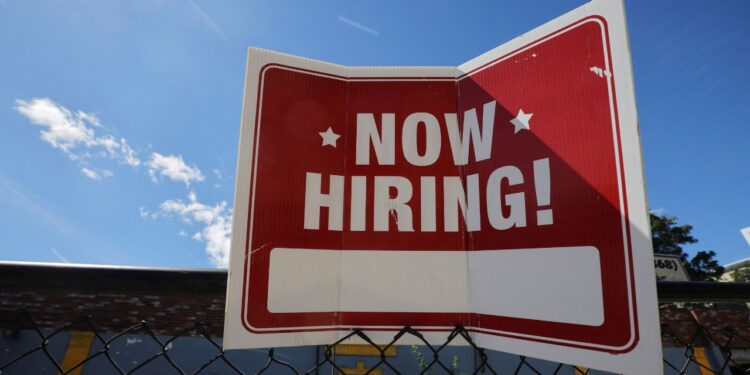U.S. job growth slowed more than expected in January after robust gains in the prior two months, but a 4.0% unemployment rate probably will give the Federal Reserve cover to hold off cutting interest rates at least until June.
The Labor Department’s closely watched employment report on Friday also showed strong wage growth last month, with average hourly earnings surging, which should keep consumer spending supported. Labor market resilience is the driving force behind the economic expansion.
“This morning’s report may be considered a Goldilocks report, not too hot and not too cold,” said Jeffrey Roach, chief economist at LPL Financial. “An unemployment rate at 4% is considered very low, giving the Fed reason to keep fed funds unchanged in the near term.”
Nonfarm payrolls increased by 143,000 jobs last month after rising by an upwardly revised 307,000 in December, the Labor Department’s Bureau of Labor Statistics said. The moderation in job gains was payback after payrolls also surged by 261,000 jobs in November. Economists polled by Reuters had expected the establishment survey to show 170,000 jobs added, with estimates ranging from 60,000 to 250,000.
The BLS said wildfires in Southern California and frigid temperatures in large parts of the country in January had “no discernible effect” on payrolls. But the household survey showed 573,000 people failed to report for work because of weather conditions, the highest for any January since 2011.
The healthcare sector continued to dominate employment gains, adding 44,000 jobs spread across hospitals, nursing and residential care facilities as well as home health care services. Retail employment increased by 34,000 jobs, mostly at general merchandise retailers.
Social assistance payrolls rose by 22,000 jobs. Government employment increased further, with 32,000 positions added. Momentum in that category, however, is likely to slow considerably amid the Trump administration’s moves to slash federal government jobs. Government employment, including state and local government, has been a major contributor to job growth.
Employment was little changed in construction, manufacturing, wholesale trade, transportation and warehousing, information, financial activities, professional and business services, and the leisure and hospitality industry.
U.S. Treasury yields rose while stocks opened largely flat. The dollar gained versus a basket of currencies.
Strong Wage Gains
The employment report included annual benchmark revisions to payrolls and other establishment survey measures, new population weights to the household survey and updates to the seasonal adjustment factors, the model the government uses to strip out seasonal fluctuations from the data.
The final employment report under former President Joe Biden’s administration showed 598,000 fewer jobs were created in the 12 months through last March than previously estimated. The final payrolls benchmark revision, however, was less than the reduction of 818,000 jobs estimated by the BLS in August.
Nonetheless, the labor market remains healthy. The unemployment rate was at 4.0%, the lowest since May. It is not directly comparable to December’s 4.1% rate because of the new population controls, which only apply to January and upcoming reports, meaning a break in the series.
Average hourly earnings rose 0.5% after gaining 0.3% in December. Wages increased 4.1% in the 12 months through January, matching the gain in December.
Labor market resilience has given the U.S. central bank room to pause rate cuts while policymakers assess the impact of the fiscal, trade and immigration policies of President Donald Trump’s administration, which economists view as inflationary.
The Fed left its benchmark overnight interest rate unchanged in the 4.25%-4.50% range last month, having reduced it by 100 basis points since September, when it embarked on its policy easing cycle. The policy rate was hiked by 5.25 percentage points in 2022 and 2023 to tame inflation.
Financial markets are expecting a rate cut in June.
There are growing concerns that mass deportations of migrants and widespread tariffs could reduce labor supply this year and make businesses reluctant to add to their costs by expanding headcount.
The new administration’s push to slash federal government jobs and spending was also expected to curb employment growth.
There are already widespread reports of layoffs at organizations dependent on federal government funding.
(Reporting by Lucia Mutikani; Editing by Andrea Ricci, Chizu Nomiyama and Paul Simao)


 Dr. Gleb Tsipursky – The Office Whisperer
Dr. Gleb Tsipursky – The Office Whisperer Nirit Cohen – WorkFutures
Nirit Cohen – WorkFutures Angela Howard – Culture Expert
Angela Howard – Culture Expert Drew Jones – Design & Innovation
Drew Jones – Design & Innovation Jonathan Price – CRE & Flex Expert
Jonathan Price – CRE & Flex Expert














